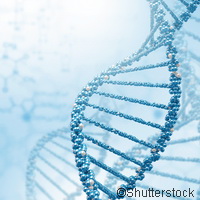New model provides understanding of hereditary processes
Genetic code can supply a wide range of informational data about a person, from their physical appearance such as eye colour, to resistance - or susceptibility - to diseases. These genes are inherited from our parents, but precisely how and when these genes are inherited hasn't been pinned down precisely. A new model developed by researchers at the Max Planck Institute has provided us with the answer to that question. The genetic blueprint of a living organism is held in the cell nucleus, in the form of deoxyribonucleic acid (DNA). Mitochondria, organelles that provide the energy for cells, also carry hereditary information like DNA of their own. Their hereditary information is known as mitochondrial DNA (mtDNA). Since the mitochondria play a central role in energy supply within the body, mutations in the genes of the mtDNA can have a serious effect on health. Any malfunctioning of mitochondria can lead to metabolic disorders in the person affected, while mutations in the mtDNA can cause muscle weakness, neurodegenerative diseases and cardiac disorders as well as diabetes. These diseases can be passed on to the next generation, which makes understanding the hereditary process even more important. To date, no suitable model system has been able to explore the question as to how and when the proportion of pathogenic mtDNA mutations that will be inherited are determined. Christoph Freyer, research scientist at the Max Planck Institute for Biology of Ageing in Cologne, Germany and the Karolinska Institute in Stockholm, Sweden together with an international research team have developed a new model - and found some answers. According to the research, intra-family differences in the degree of mutation of the mitochondrial genes are largely established before the mother herself is born. It also appears that the respective disease can be passed down to the next generation via the mutated genes, but only the maternal mtDNA is transmitted. The main player here is a pathogenic, i.e. a disease-inducing mutation in a mitochondrial gene known as 'tRNA methionine'. Mutations in mitochondrial tRNA genes cause a high percentage of the known mitochondrial diseases, although tRNA genes constitute only a fraction of the total mtDNA. This discrepancy has never been satisfactorily explained. Freyer's main breakthrough was to show that in contrast to the protein-coding genes, shown by recent research to be subject to prenatal selection, tRNA genes are not weeded out by the female germ line. So whether and to what extent mutant genes can be transmitted to the next generation is decided when the future mother is still herself an embryo, during the development of her germ cells. Mutant genes often coexist with normal genes, a condition called heteroplasmy, in the affected egg cells. In other words, mutated and non-mutated genes are found in each egg cell in a particular ratio, and thus the mutation may or may not be transmitted to the next generation. This also explains the differences arising within a family. As a result of these scientific findings, the researchers uncovered a feature of maternal genetics that may pave the way to novel possibilities for genetic diagnosis. The observation that in this model the mice mitochondria try to compensate for potential defects caused by mutations provides further insight into the hereditary mechanisms underlying mitochondrial disease. 'Perhaps,' suggests Freyer, 'this compensation could be stimulated by medical means.' The young researcher plans to use his mouse model in future to test therapies that could possibly prevent the hereditary transmission of mtDNA mutations.For more information, please visit: Max Planck Institute for Biology of Ageing: http://www.age.mpg.de/index.php(opens in new window) Karolinska Institute: http://ki.se/?l=en(opens in new window)
Countries
Germany



